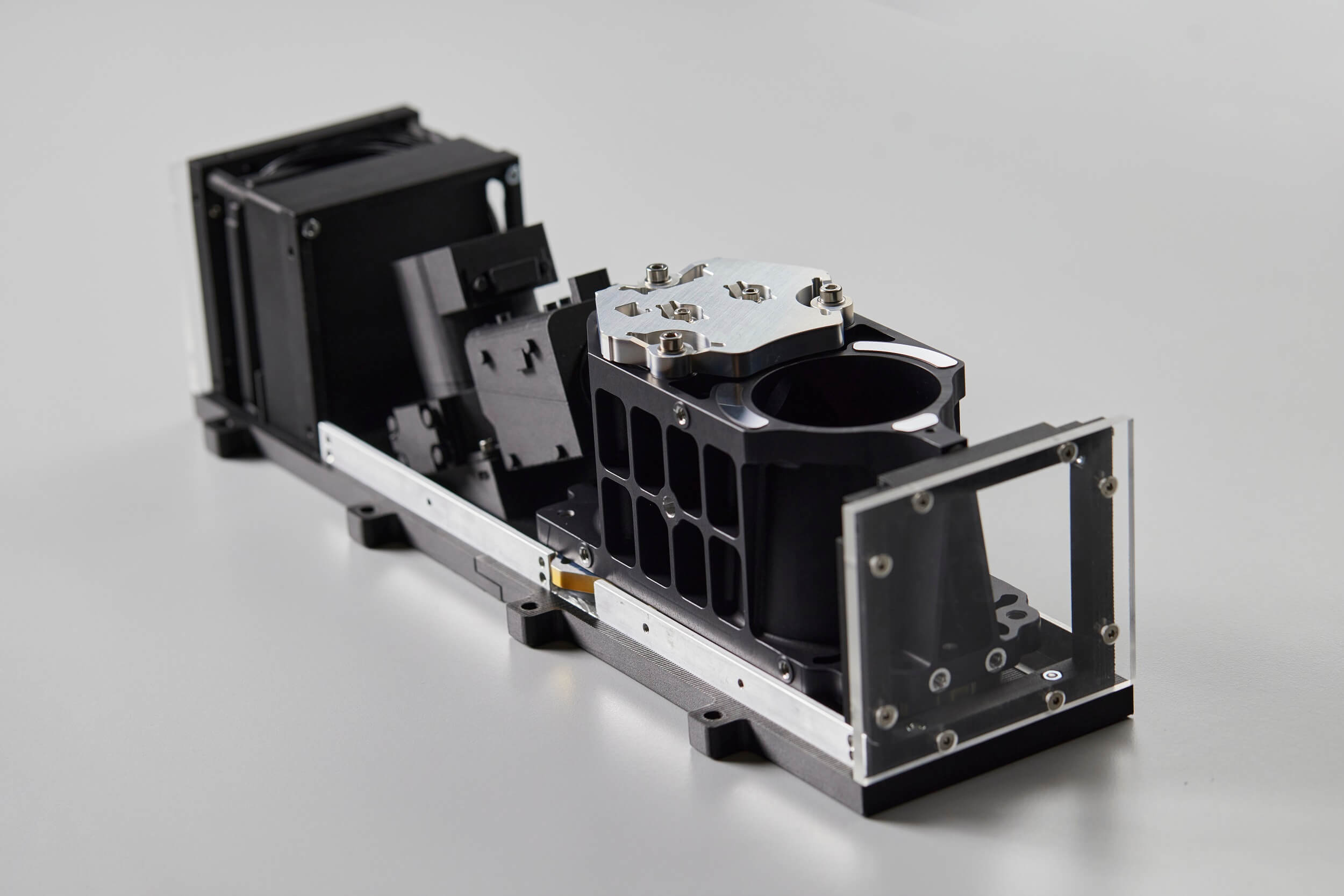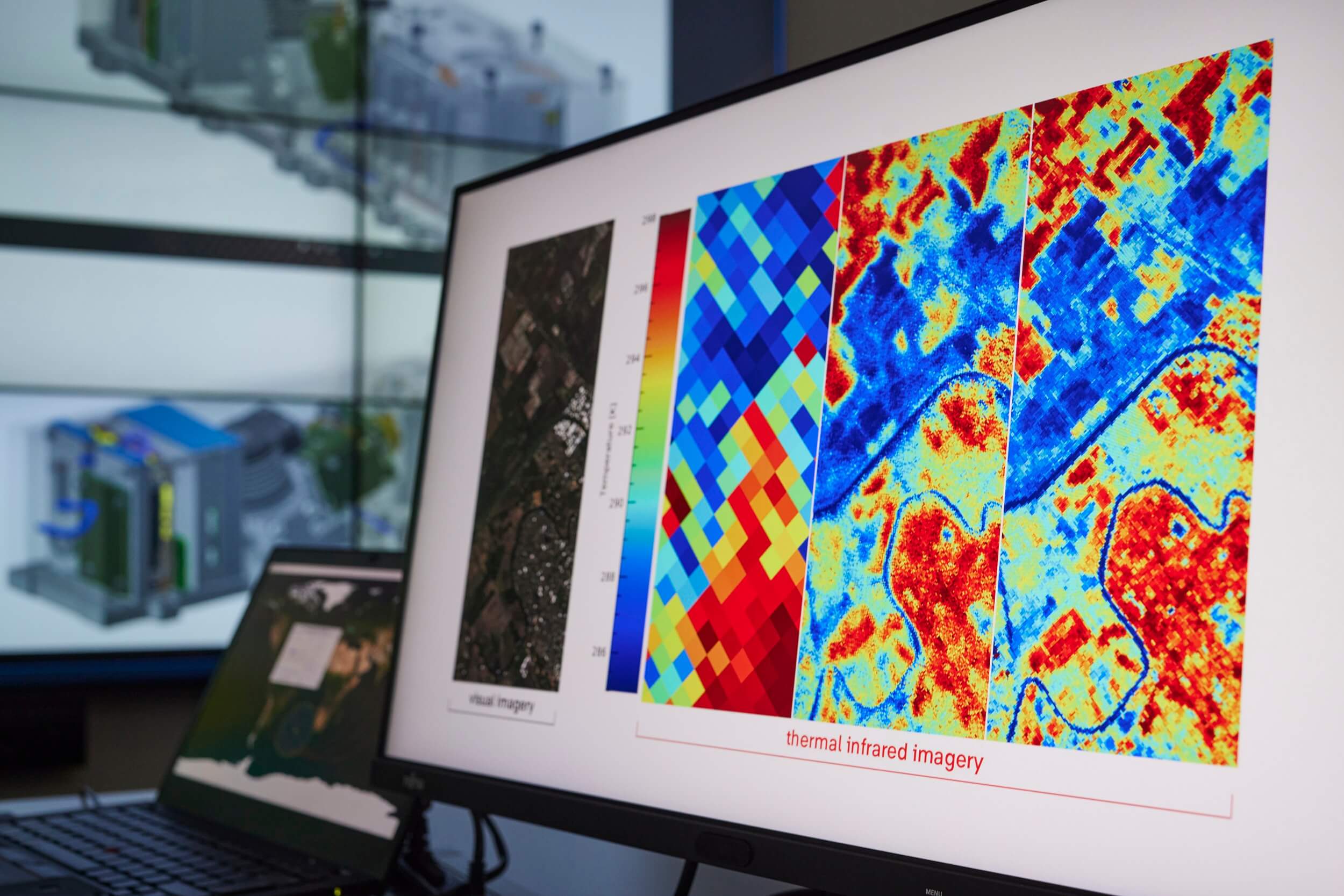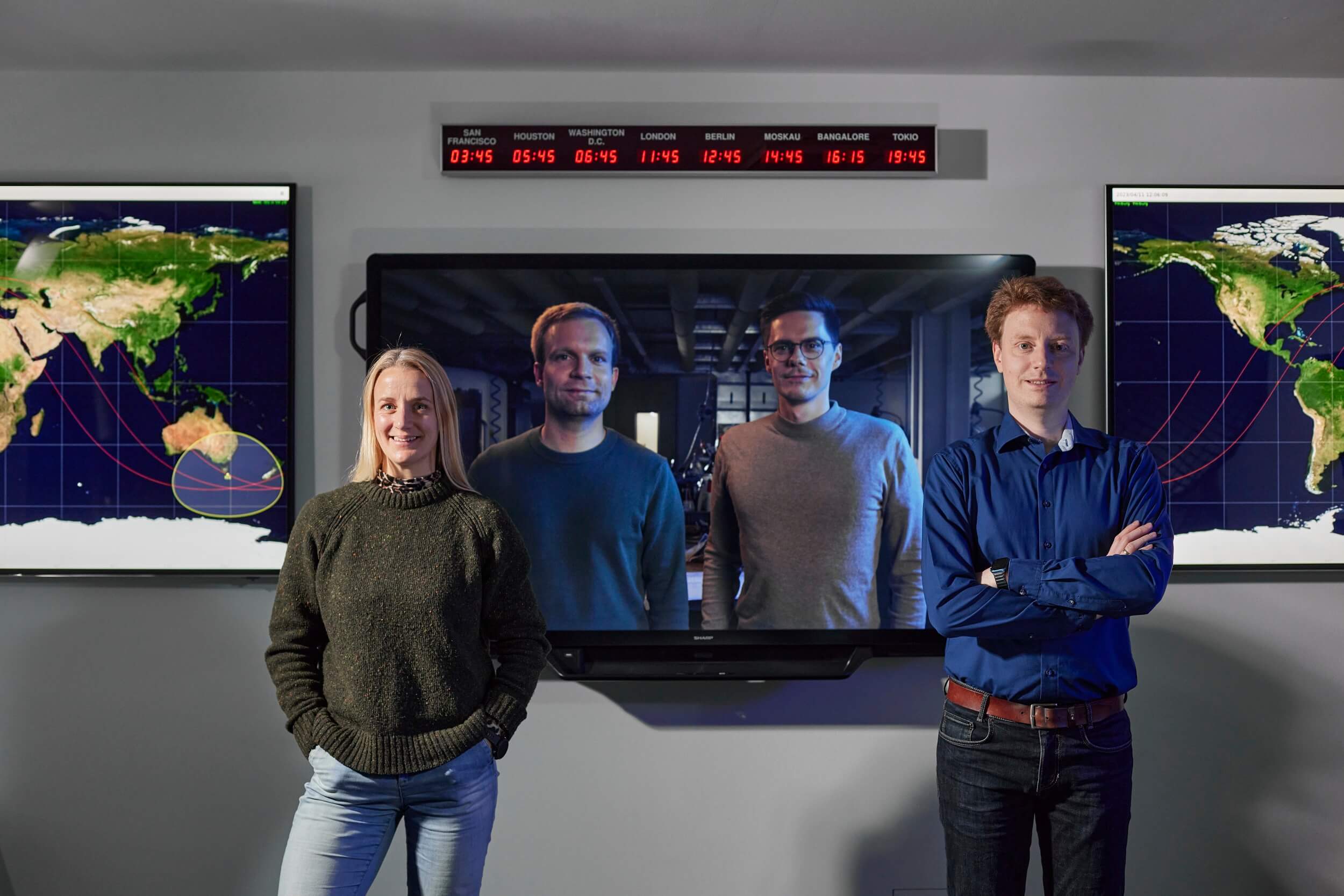A sustainable way to determine plants’ water needs
Satellite technology — sustainable use of water in agriculture
Water is becoming increasingly scarce. In the future, innovative satellite technology will ensure that plants are given only as much water as they need, leading to a more sustainable use of this essential resource. A prototype of the technology, LisR, has already been tested on the International Space Station (ISS). A team of researchers from the Fraunhofer Institute for High-Speed Dynamics, Ernst-Mach-Institut, EMI, the Fraunhofer Institute for Applied Optics and Precision Engineering IOF and two spin-offs, constellr GmbH and SPACEOPTIX GmbH, has received the Fraunhofer Prize for Human- and Environment-Centered Technology for this development.
In Germany, it’s taken for granted that there will always be enough water available. However, in the future, this essential resource could become scarce — after all, the Intergovernmental Panel on Climate Change predicts that, due to climate change, the intensity and frequency of droughts will increase along its current trajectory. In addition, the global population is also continuing to grow. It is estimated that, by 2050, the earth will be home to almost ten billion people — and those people will need food. This will be a challenge, as approximately 70 percent of our drinking water is currently used for irrigation. Most worryingly, 60 percent of this water is wasted due to overwatering.
Researchers from Fraunhofer EMI, Fraunhofer IOF and the companies constellr GmbH and SPACEOPTIX GmbH — both spin-offs of these institutes — have taken inspiration from the founding principle of constellr GmbH to develop the infrared camera LisR (short for Longwave infrared sensing demonstratoR). Following a successful demonstration on the ISS, the findings from the LisR mission will now be used as the basis for building a satellite constellation. In the future, this satellite constellation will measure the land surface temperature from orbit and help adjust irrigation systems according to the level of water actually needed. As early as 2026, this method could save 180 billion tons of water and 94 million tons of CO2 per year, while supplying plants with the optimal amount of water could increase global harvests by up to 4 percent. This would produce enough additional food to feed over 350 million people. Clemens Horch of Fraunhofer EMI, Dr. Henrik von Lukowicz of Fraunhofer IOF, Cassi Welling of constellr GmbH and Dr. Matthias Beier of SPACEOPTIX GmbH have been awarded the 2023 Fraunhofer Prize for Human- and Environment-Centered Technology for their work on developing the LisR technology prototype.
Measuring the actual land surface temperature


But how does this technology actually help conserve such large quantities of water and CO2? “From a satellite, the technology monitors the Earth’s surface and detects the infrared radiation that the surface emits — i.e., the thermal radiation,” Ms. Welling explains. “Whereas other solutions just model the land surface temperature, we directly measure the canopy, or land surface temperature of vegetation. In doing so, we can provide a precise assessment of water availability vs need and detect stress earlier than ever before” This allows the researchers to deduce how much water a plant needs: If plants are not getting enough water, less water evaporates through their leaves, and that raises the temperature. The level of heat in particular areas of the field can give farmers a clear indication of where the plants need more water and where they do not.
The keys to the partners’ success in developing the technology demonstrator were their collaborative efforts and complementary expertise. While Fraunhofer IOF developed compact optics that could easily be integrated into the camera module, SPACEOPTIX prepared the necessary freeform mirror optical systems with nanometer precision. For their part, the researchers at Fraunhofer EMI contributed a patented measuring process in which the camera images are used to determine the exact land surface temperature. The task of planning the mission and evaluating the data went to constellr GmbH.
Testing on board the ISS
In order to try out the new technology under real-life conditions, the researchers developed a demonstrator that was tested on the ISS in spring and summer of 2022 — a huge honor. “From the ISS, we were able to capture about ten million images, with a resolution of around 80 meters,” Mr. Horch is pleased to report. The experts at constellr intend to build on this success by launching 16 small satellites by 2028 — these will be able to precisely measure the land surface temperature everywhere on the planet, with daily frequency, to a resolution of better than 50 meters'. This support from space will allow farmers to determine the optimal amount of irrigation for their agricultural land.
Fraunhofer image film for the 2023 award ceremony
Fraunhofer image film for the 2023 award ceremony
Duration: 02:21
Language: German
Additional information
Fraunhofer Prize for Human- and Environment-Centered Technology
The Human- and Environment-Centered Technology prize is presented by the Fraunhofer-Gesellschaft zur Förderung der angewandten Forschung e. V., the Fraunhofer Future Foundation and the former executive board members, institute directors and patrons of the Fraunhofer-Gesellschaft. It is awarded every two years for achievements in research and development that improve people’s quality of life or help make our world more sustainable. In 2023, the Fraunhofer Future Foundation is contributing to the prize money, which amounts to 50,000 euros.
